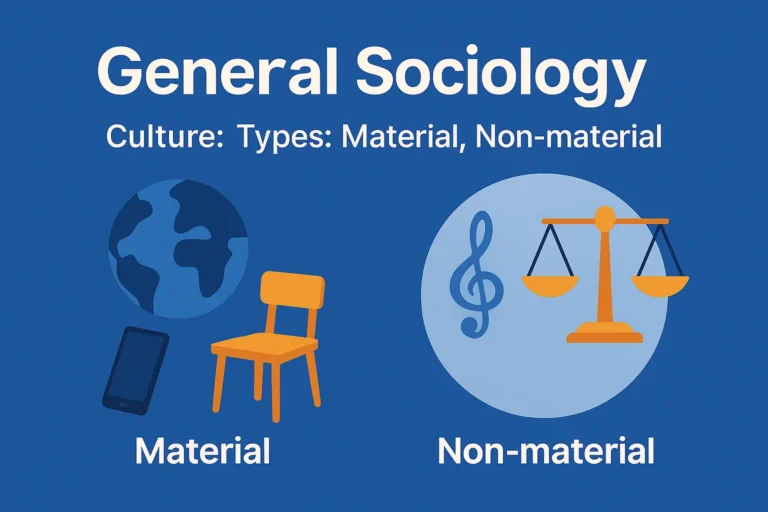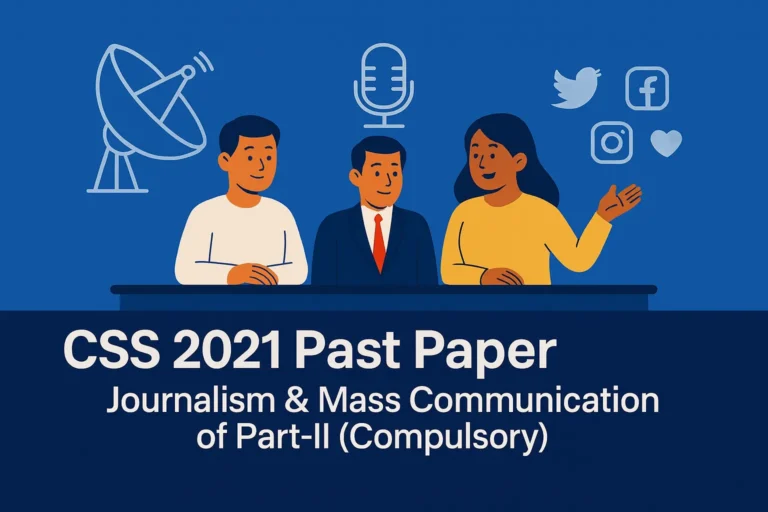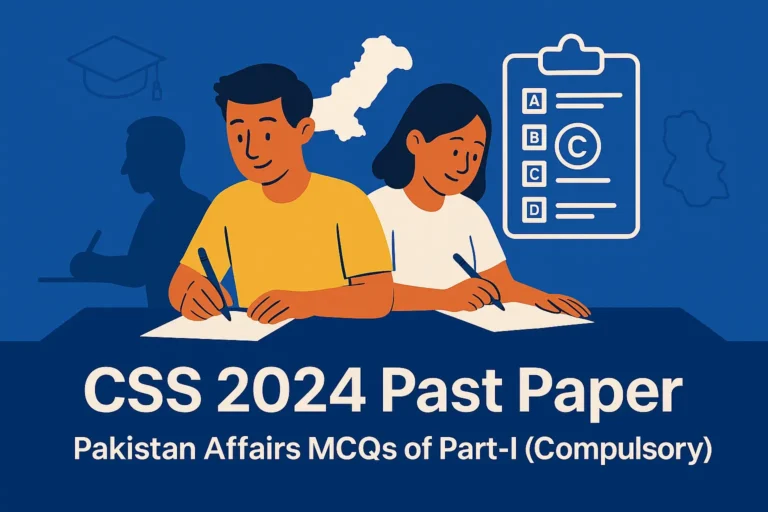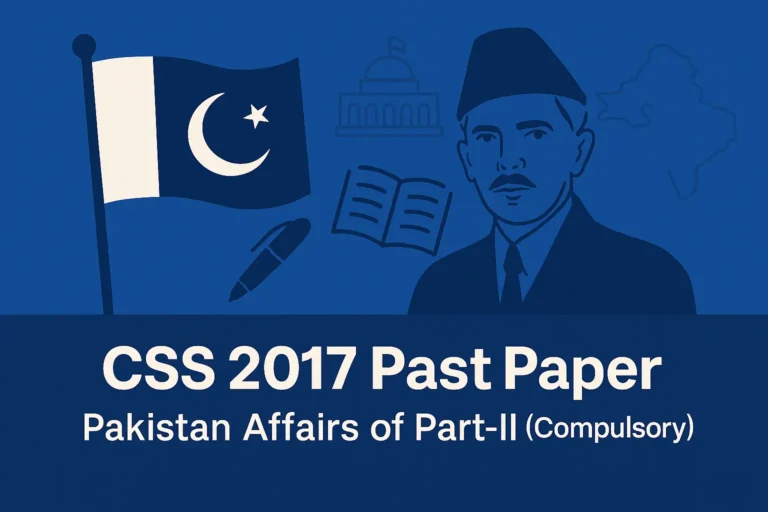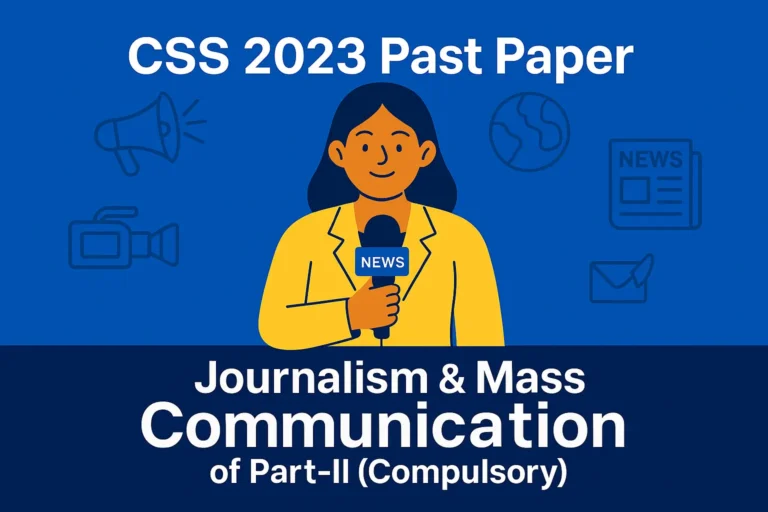New National Education Policy (2009)
(English Essay – CSS & PMS)
Outline
- Introduction
- Goals and Ambitions of NEP 2009
- Challenges in Achieving Targets
- Financial Allocations and GDP Share
- Upgradation of Public Sector Schools
- Policy on College Education and Intermediate Classes
- Proposal for Common Curriculum
- Parallel Streams of Education in Pakistan
- Policy Failures and Gaps
- Implementation Issues
- Conclusion
Introduction
The Cabinet approved the new National Education Policy on 6th September, aiming to tackle the pressing challenges that Pakistan’s education sector has long been facing. The policy lays out a set of ambitious goals designed to bring significant improvements and reforms. The policy thus has evoked a mixed reaction from educationists and other citizens.
Goals and Ambitions of NEP 2009
The policy set an ambitious goal of raising the national literacy rate to 85 percent by 2015. This target was linked to Pakistan’s international commitment made in Dakar, Senegal, during the 2000 World Education Forum organized by UNESCO, the World Bank, and other global agencies. To honor this pledge, the government prepared a National Plan of Action (NPA) aligned with the six Dakar “Education for All” objectives. These included, among others, expanding early childhood education, ensuring free and compulsory primary schooling, and achieving a 50 percent rise in overall literacy. In line with these objectives, the NPA outlined the following specific targets:
Literacy Targets:
- UPE (Universal Primary Education) – 100 percent primary enrolment by 2015.
- ECE (Early Childhood Education) – 42,500 ECE centres established and increased participation rate from 25 percent to 50 percent by 2015.
- Literacy – 86 percent adult literacy rate by 2015.
Challenges in Achieving Targets
These goals remained unfulfilled, largely due to weak political commitment, insufficient funding, and serious gaps in the system’s implementation capacity. These snags, it is feared, would again stand in the way of achieving the literacy target (85 percent) announced by the National Education Policy of 2009. The overall performance of Pakistan in the field of literacy has not been satisfactory. If Pakistan succeeds in achieving hundred percent enrolment by 2015, it would be an achievement worth the name. Many factors are at work to achieve UPE.
It calls for a multi-pronged strategy to reduce dropouts, which militate against the achievement of UPE. All the same, if the government shows political will to achieve UPE, it can succeed in its efforts.
Financial Allocations and GDP Share
The National Education Policy aims at allocating 7% of GDP by 2015 to education. The target appears rather over-ambitious, as Pakistan’s profile on this count has remained far from satisfactory. It is relevant to point out that at present, the allocation to the education sector is 2 percent of the GDP. It doesn’t appear easy to give a jump from 2 percent to 7 percent of GDP by 2015, as alleged by the policy. However, wishful thinking runs contrary to the hardcore reality. It is worth noting that in 2006–07 the education budget stood at 2.5% of GDP, but the following year, 2007–08, it was further reduced to 2.47%. In 2008-09, the percentage further came down to 2.1% GDP. Evidently, this appears to be a case of disparity between professed ideas and actual practice. If the education sector could get 4% GDP by 2015, the recommended norm of UNESCO, it could be considered an achievement in itself.
Upgradation of Public Sector Schools
Another declared objective of the policy was to raise the standard of public schools so that, by 2010, they could stand on par with reputable private institutions. It is indeed a good declaration of the policy, but one wonders what magic wand would be employed to achieve the objective by 2010. Upgradation of the level of public schools to that of the good private schools involves a host of variables like teachers’ efficiency, production of quality books, administration, monitoring, etc. These variables are of horrendous proportions, and one wonders how the objective could be achieved within one year of the operation of the National Education Policy.
It is a problem of frightening proportions, which needs a lot of factors of varied nature to seek the upgradation of the level of public schools to those of the really good schools. It means to improve the quality of education as a whole. Till now, we have failed to achieve the objective, and it appears a distant dream to achieve it within a year of the operation of the policy. Times of miracles are over once and for all. The planners must have their feet on the ground realities, as ambitious targets are all right to beguile oneself, but not good from the practical point of view.
The policy aims at upgrading all primary schools to the level of middle schools and envisages a plan for expanding basic facilities. It may not be possible to attain the objective in view of the shortage of finances. It appeared in the newspapers that the government of Baluchistan had expressed its inability to translate the objective into reality owing to the shortage of resources. Since education falls under the provincial domain, the task of putting policy into practice ultimately lies with the provinces. It is feared that scarcity of resources may stand in the way of the provinces achieving the objective. However, it requires a strong political will to go by the objective for its realization.
Policy on College Education and Intermediate Classes
The policy also stipulates that grades 11 and 12 will no longer be part of college education but will instead be integrated into the school system. In simple terms, it suggests separating these classes from colleges and placing them under school education. It is going to involve a lot of repercussions of different natures. That is going to reduce the capacity of colleges as the government would recruit teachers for higher secondary schools, and it would decrease the strength of college teachers.
The present working capacity of colleges would be greatly undermined, as it would lead to the underutilization of the existing educational inputs in the form of teaching staff. The existing number of Higher Secondary Schools, numbering 250 in the Punjab, is far from satisfactory. Besides, a great difference is witnessed in the profile of students from colleges and those studying Intermediate classes in higher secondary schools.
It would have been much better if the national education policy had recommended some concrete measures for the improvement of the standard of education (Science & Arts) at the college level instead of delinking Inter classes from the college education and linking it to the higher secondary school education. This experiment was tried in the past, but it did not prove its efficacy and usefulness. New experimentation has its own justification, but it should be consistent with the ground realities.
Proposal for Common Curriculum
Another feature of the national education policy is that it proposes to introduce a common curriculum framework for both public and private educational institutions. The policy also envisions the creation of distinct academic and educational management cadres, each with defined training and qualification standards, while proposing an increase in teachers’ salaries to improve their professional status and motivation. It is a welcome suggestion.
One is, however, sceptical about its implementation, as the private schools like Beacon House, City School, Grammar School, and a host of others would strongly resist the introduction of a common curriculum. The opposition of the private schools managed by the rich elites cannot be ruled out. Above all, the feudals, the industrialists, and the bureaucrats, having a peculiar fascination for Western education, would greatly oppose the move of the government.
Parallel Streams of Education in Pakistan
At present, there are two main streams of education running parallel to each other in Pakistan. The privately managed private schools follow the syllabi of the foreign universities like Cambridge and Oxford. The medium of instruction is English. They follow an altogether different curriculum, which is against the spirit of national cohesion. The need for a uniform curriculum cannot be underscored. It would be an achievement if the government, through a strong will, succeeds in introducing a uniform curriculum for the public and private institutions. One gets the impression as if it is an ambitious declaration of the NEP.
Policy Failures and Gaps
“The policy falls short in addressing one of the most critical challenges—social injustice and inequality. It does not clearly outline how education can serve as a tool to bridge the divide between the privileged and the underprivileged. Nor does it explain how the system can nurture critical thinking, encourage open-mindedness, and challenge rigid taboos or intolerance embedded in society. Instead, the current structure of education continues to widen the gulf between the rich and the poor.
The real issue that needs attention is the deep divide between elite institutions and underfunded public schools—an educational apartheid of sorts. Simply declaring free education up to the matriculation level cannot resolve this imbalance. What truly matters is the difference in opportunities available to a student graduating from a public school with a matric certificate compared to one emerging with an ‘O’ level qualification from an elite English-medium school”. (Dr. Shahid Siddiqi Dawn, 14th Sept. 2009)
Implementation Issues
The real trouble arises at the implemental level. Excellent paper tigers are made, which remain paper tigers throughout. The nation can benefit when paper tigers are made into the real ones. It needs a strong will on the part of the government to strive hard to make the NEP effective for realizing the goals.
Conclusion
The important features of the NEP have been briefly highlighted. Readers interested in going into details may consult the website of the Federal Ministry of Education.
Click here to find more articles on English Essay.

